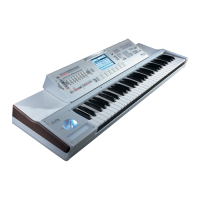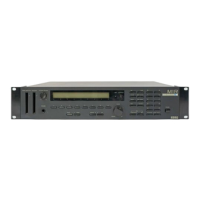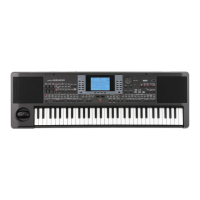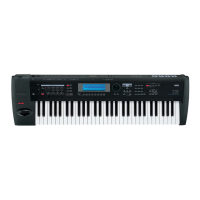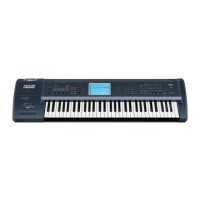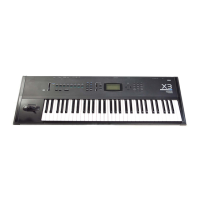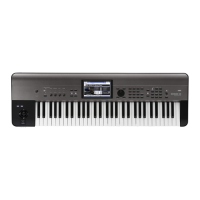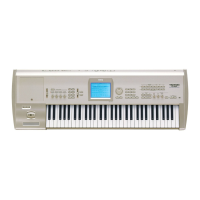68
Writing, saving, and loading data
Writing to internal memory
The settings you edit or create can be stored in the M1 soft-
ware synthesizer’s internal memory.
On the original M1, the programs used by a combination
were the same data as the programs in Program mode. On
the M1 software synthesizer, Combination, Multi, and Pro-
gram modes each maintain their program data indepen-
dently. This means that even if you edit a program in
Program mode, the programs used in Combination mode or
Multi mode will not be affected.
The WRITE command does not save the data to your
computer; it only stores it to the M1 software synthe-
sizer’s internal memory. Any data you’ve stored will
be lost if you exit the application without saving. If
you want to keep your stored combinations and pro-
grams, click the [FILE] button and use “Save” to save
them(☞ “Saving data on your computer” on page 74).
Combinations
Combinations you create or edit can be written (stored) into
the M1 software synthesizer’s internal memory.
The M1 software synthesizer provides four internal “user
cards,” each holding 50 combinations. This gives you a total
of 200 combinations stored within the M1.
Settings that are remembered when you Write
•Programs used by each timbre
• Each timbre’s output settings, MIDI settings, key zone,
velocity zone, and master effect settings
The program adjustment parameters in the Perfor-
mance page are applied to the program parameters
when you Write, and their values will be reset to 00.
Settings that are not remembered when you Write
• Solo/Mute.
• The TABLE and LINK ON/OFF settings of the Perfor-
mance page.
• The LINK EDIT, VDF Select, VDF EG Select, and VDA EG
Select settings of the EASY page.
• The “KBD CHASE” setting of the OSC page DRUM KIT
EDIT section and the “Point Select” setting of the PITCH
EG section.
• The “Point Select” setting of the VDF page VDF EG sec-
tion.
• The “Point Select” setting the VDA page VDA EG section.

